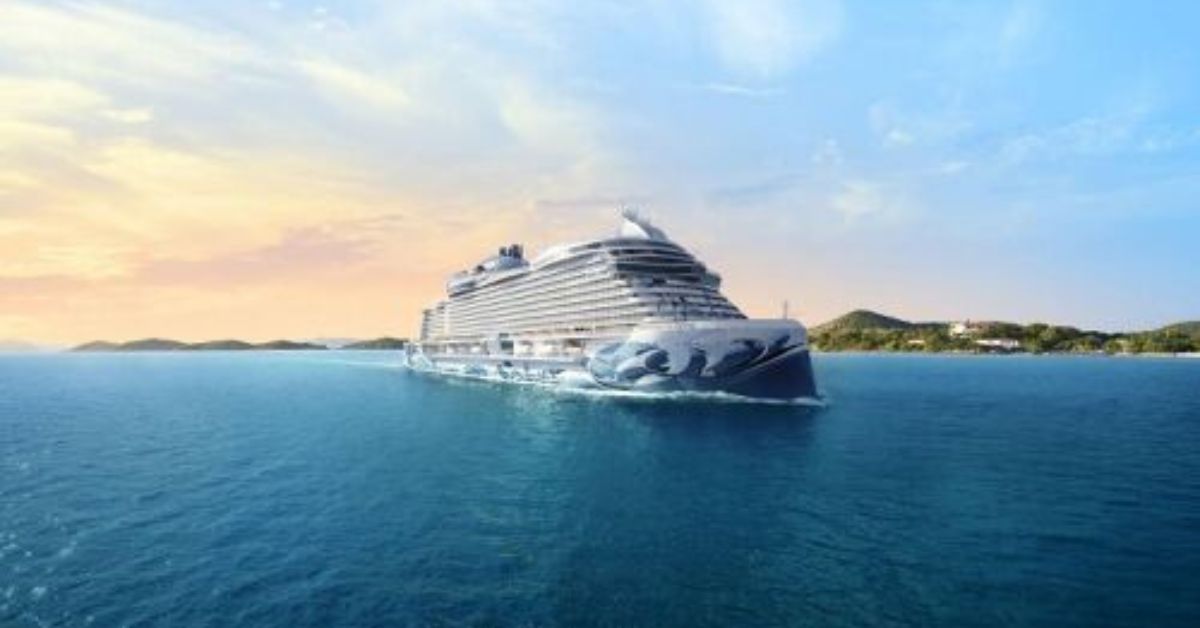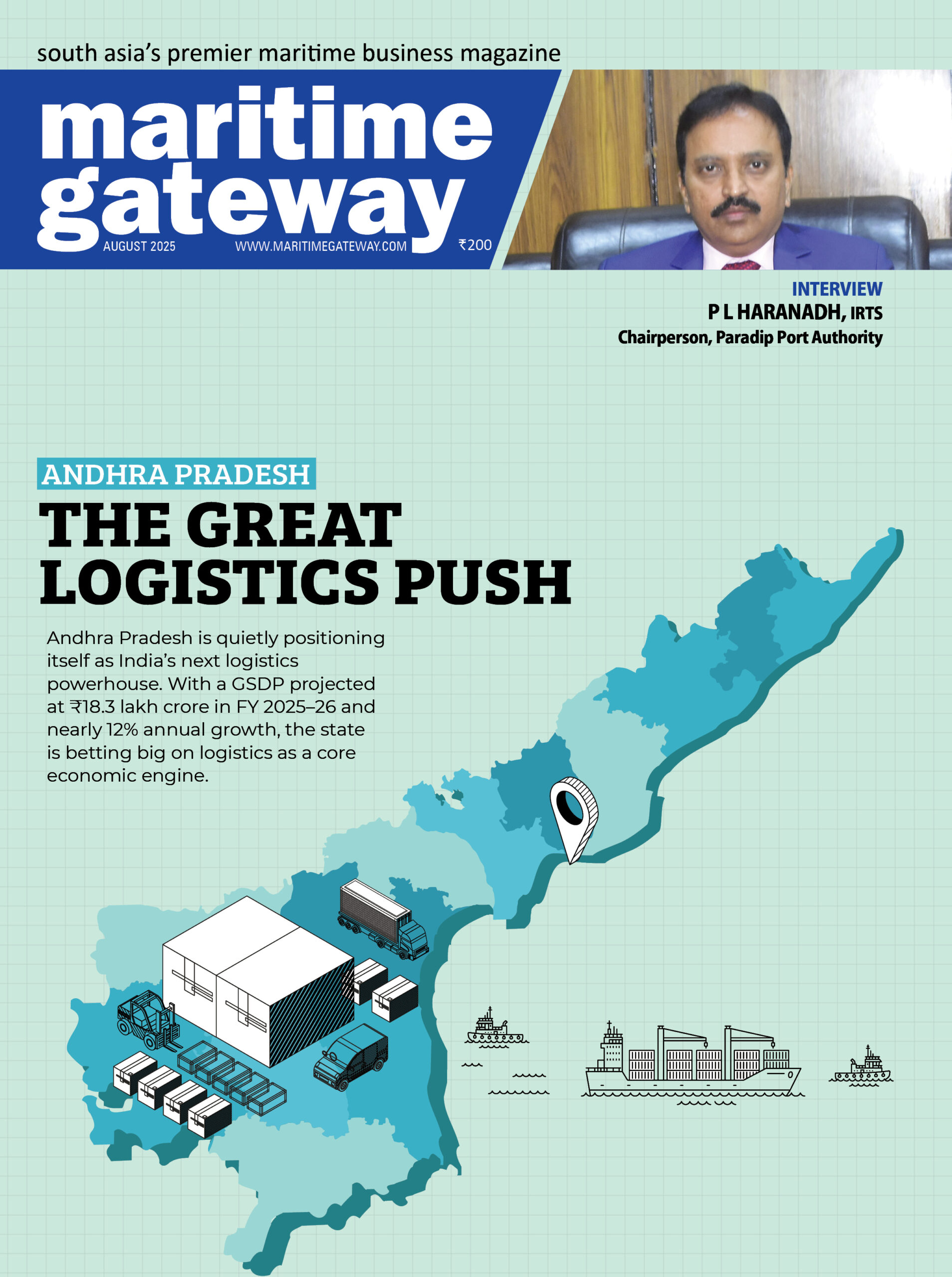What was once a niche segment for affluent globetrotters has begun to evolve into a more inclusive, aspirational option for Indian tourists across age groups and geographies and becoming an important pillar of India’s broader tourism and maritime strategies. With strong policy backing, rising traveller interest, infrastructure upgrades, and global cruise operators showing renewed confidence, the country is poised to reposition itself as a formidable player on the global cruise map.
Inland waterways are being revitalised with support from the Inland Waterways Authority of India (IWAI) through investments in dredging, passenger amenities, and navigation systems. The success of the MV Ganga Vilas—the world’s longest river cruise—has showcased the potential of long-distance inland cruising. The vessel has completed 14 voyages since its debut in 2023, offering a spiritual, cultural, and scenic experience that traverses northern and eastern India.
A market on the move
India’s cruise sector has shown robust growth. The country handled 471,000 cruise passengers in FY 2023–24, with CBM targeting one million passengers by 2029 and a long-term vision of reaching five million by 2047. From 102 cruise calls in 2013 to 479 in 2023, the momentum is building. Valued at $139 million in 2024, the Indian cruise market is projected to touch $323 million by 2030, growing at a CAGR of 15 percent. The Asia-Pacific region’s rise as a preferred cruising hub offers additional tailwinds for India’s maritime tourism aspirations.
Indian tourists are demonstrating a growing appetite for cruise travel. While 3 to 5-day itineraries remain popular among first-time cruisers and families, there is a rising interest in longer voyages ranging from 7 to 9 days.
Destinations across Southeast Asia, the Caribbean, and the Mediterranean are gaining traction among Indian outbound travellers. Short cruises to the Bahamas and Caribbean continue to be top picks, but itineraries to Alaska, Mexico, Bermuda, Australia, and the Middle East are also drawing attention. Closer to home, Phuket in Thailand and Penang and Melaka in Malaysia are preferred regional cruise stops, especially for Indian travellers seeking a combination of leisure and cultural discovery.
The market is witnessing increased traction in the fly-cruise segment, where travellers fly to international cruise departure points to embark on voyages. This model is gaining ground due to its convenience and access to exotic itineraries otherwise unavailable through Indian home ports.
Generational shift and thematic travel trends
What’s especially notable is the shift in traveller demographics and expectations. Millennials and Gen Z, known for prioritising experiences over possessions, are emerging as a strong consumer base. These younger travellers show a marked interest in cruises, with many expressing intents to cruise within the next two years.
Their preferences lean towards all-inclusive packages, themed itineraries, and immersive experiences. At the same time, multigenerational families and corporate groups are opting for cruises as an ideal blend of convenience and entertainment. The cruise platform.
has become attractive for MICE (Meetings, Incentives, Conferences, and Exhibitions) tourism as well, with companies seeking novel settings for engagement and teambuilding.
Another trend is the rise of cruise connoisseurs—seasoned Indian travellers who are now exploring expedition cruises, small ship journeys, and river cruises.
There is also increased curiosity about Nordic landscapes, cultural circuits in the Mediterranean, and wildlife-themed itineraries that offer a more intimate, nature centric voyage.
A significant evolution is underway in travel patterns. Indian cruisers are showing a clear shift towards longer and more immersive holidays, graduating from short 2–3-night sailings to 5–7-night itineraries and beyond.
Japan is fast emerging as a preferred destination with seasonal cruise deployments spanning seven months and itineraries ranging from 7 to 14 days.
Destinations like Svalbard, Antarctica, Greenland, Iceland, and the Galápagos are seeing a spike in interest, especially among affluent, well-read travellers who are seeking once-in-a-lifetime experiences in remote corners of the world. Polar cruises have especially captured the imagination of Indian adventurers.
These travellers are increasingly choosing nature-focused, educational, and expedition-style cruises over conventional leisure trips. Experiential travel is now
the dominant motivation, and thematic cruises—such as wildlife observation, wellness, music, and alumni reunions—are finding fertile ground among Indian travellers.
What was once considered aspirational is now attainable, and often repeatable.
Global linkages
Cruise lines such as Princess, Cunard, Seabourn, P&O Cruises-UK, Hurtigruten, Aurora Expeditions, and Crystal are reporting heightened interest from Indian travellers. The sector witnessed a 7 to 10 percent year-on-year growth in the past year, with a visible expansion in both first-time and repeat cruisers.
A significant development on the horizon is the much-anticipated deployment of Disney Cruise Line in Singapore from December 2025. This has already generated a wave of enthusiasm among Indian families and travel agents, marking an inflection point in India’s outbound cruise demand.
Domestic growth and cultural integration
India’s domestic cruise routes are expanding steadily. Short-haul luxury voyages such as Mumbai–Goa have seen strong demand, and Haj Sea pilgrimage proposals from Mumbai underscore the sector’s social and cultural relevance.
Cordelia Cruises has scaled up its operations within India with a focus on affordability and sustainability.
Indian travellers are increasingly recognising cruise tourism as an annual travel option rather than a once-in-a-lifetime splurge.
Challenges remain: infrastructure and crisis management
Despite progress, challenges persist. Secondary ports often lack cruise-compatible infrastructure, and immigration and customs processes vary across states.
Port operations remain cargo focused, with limited passenger centric design. Environmental infrastructure, including shore reception facilities for cruise waste, is missing at many ports.
The Red Sea crisis offers a recent example of vulnerability. Mangalore Port, which previously hosted 25 cruise ships annually, handled just seven vessels in 2023–24. This decline impacted local tourism and vendors who depend on cruise footfalls for livelihoods. Operators are urging route diversification and improved domestic circuits to reduce reliance on geopolitically sensitive zones.
Conclusion: India’s maritime moment
Despite the positive momentum, cruising is still seen as a premium or occasional indulgence by many Indian consumers. To realise its full potential, the industry must focus on making cruising a mainstream holiday option—on par with international vacations or beach resorts. This can be achieved through better education, innovative packaging, and increased visibility in the domestic travel market.
As Cruise Bharat takes shape, the synergy between public policy, private investment, and consumer engagement will be vital. The success of cruise tourism in India will not only diversify the country’s tourism offerings but also deliver significant socioeconomic benefits. What lies ahead is a journey of both opportunity and transformation, with India preparing to anchor itself as a prominent player in the global cruise tourism industry.
India’s cruise story is gaining depth and direction. With Cruise Bharat Mission at the helm, the nation is not just opening up its ports but creating new economic pathways. Whether through luxury liners, river cruises, or small expedition vessels, India is leveraging its maritime geography to shape a new chapter in tourism led growth.
The journey ahead calls for continued collaboration between government, operators, and the private sector. By aligning policy ambition with infrastructure delivery and global marketing, India can unlock its vast blue economy potential. As the world’s cruise industry seeks new horizons, India is ready to set sail—charting a bold course into the future.









